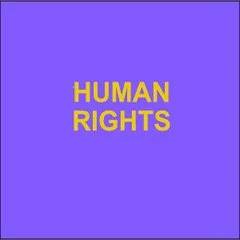By BRIAN BLACKWELL, COLIN CAPRARA, JANEY ROUNTREE, ROBERT SANTILLANO, DANA VANDERFORD, CLAIRE BATTIS
Homelessness continues to be a major problem in California, and new approaches to addressing it are urgently needed. This report brings to light an innovative predictive model for homelessness prevention that is showing promising results. The data reveals that this approach — being used for the first time in California and the United States — reaches individuals who are outside of the usual preventive safety net at critical junctures in their lives. Timing is everything — and the Homelessness Prevention Unit connects at-risk people to crucial services and support that could help them avoid homelessness. Consider the scope of the problem: more than 75,000 people experience homelessness in Los Angeles County on any given night in 2024. This represents a 9% increase since 2022 and a 43% increase since 2018. Clearly, long-term solutions to homelessness require not just housing people experiencing homelessness but also preventing homelessness before it occurs. A statewide survey in California revealed that most people experiencing homelessness believe that a one-time payment of $5,000 to $10,000 would have resolved their rapidly escalating financial crises and prevented them from experiencing homelessness. Existing homelessness prevention programs typically include one-time cash assistance ranging on average between $1,000 to $5,000 and short-term direct services such as legal assistance. Several studies have found this approach to be effective at reducing homelessness. Yet research also highlights how difficult it is to ensure that scarce prevention resources primarily reach people who will experience homelessness if they do not receive this help. In partnership with Los Angeles County, the California Policy Lab (CPL) is researching strategies to address this challenge, including developing a data-driven predictive model that can proactively identify people at highest risk of experiencing homelessness. In many prevention programs, participants self-identify as being at risk of homelessness and are then screened into programs based on eligibility criteria or surveys that ask questions about risk factors. CPL’s predictive model, however, analyzes de-identified data to proactively identify people at high risk of homelessness. Our research finds that people identified by the predictive model are not connected to typical prevention programs, indicating that both approaches are valuable and reach different people. To test whether this model could be used to better target prevention resources, in 2020, Los Angeles County created the Homelessness Prevention Unit (HPU) operating out of the Housing for Health division of the Department of Health Services (DHS) in close collaboration with the Chief Information Office (CIO) and Department of Mental Health (DMH). A County seed funding investment in the HPU made it possible to pilot an innovative approach to homelessness prevention that offers flexible cash assistance and tailored case management to individuals and families predicted by CPL’s model to be at the highest risk of experiencing homelessness. Because the HPU is located within the Los Angeles County health system, CPL’s model is focused on people who recently received DHS or DMH services and who are observed as stably housed in County administrative data. This group includes nearly 100,000 people over the course of a year (the “eligible population”). CPL uses the model to produce lists multiple times a year of people with the highest risk of homelessness. The lists are anonymized and rank-ordered from highest to lowest risk of homelessness. CPL sends the high-risk lists to the CIO, where County staff match each person’s anonymized record to a County medical record ID. The CIO then transfers the lists to the HPU so that they can identify names, addresses, and contact info of the patients listed. HPU staff then screen out some people on the risk lists that other data sources indicate are currently experiencing homelessness and are therefore ineligible. For eligible individuals, HPU staff attempt to contact them, and, if they are willing, enroll them in the intervention. The HPU serves between 400 to 600 people per year. The intervention includes rapidly delivered, flexible cash assistance, tailored case management, and referrals to other services, such as mental health care, workforce development, and legal services. This policy report provides an overview of: (1) CPL’s predictive model, including data sources and engineering; (2) the equity of the predictive model; (3) outreach and enrollment in the HPU; (4) the HPU’s design and service model; and (5) how CPL will evaluate the impact of the HPU program in a randomized control trial
Los Angeles: The California Policy Lab , 2024. 50p.



